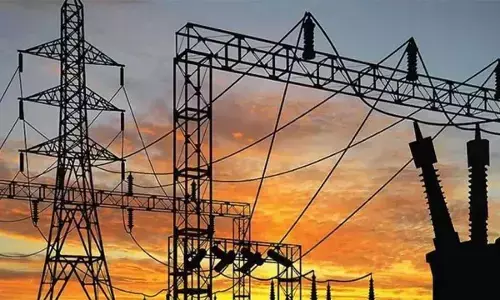La Nina and El Nino

While it is gradually becoming clearer that La Niña -- which causes bountiful rain -- is unlikely during the monsoon this year, there is still no certainty as to what the status of El Niño, which causes less rain, will be.
While it is gradually becoming clearer that La Niña -- which causes bountiful rain -- is unlikely during the monsoon this year, there is still no certainty as to what the status of El Niño, which causes less rain, will be. Earlier, this week, the Australian Weather Bureau in its latest weather update said that in marked contrast to last year, western Pacific sub-surface temperatures are up to 5° C more than they were at this time last year, indicating La Niña-like conditions are unlikely in 2017.
The World Meteorological Organization has said that there is a 35-40 per cent chance of El Niño reappearing this year and a 50 per cent chance of neutral conditions prevailing during the second half of 2017, which is after June -- the time when India’s southwest monsoon peaks, according to a report in Business Standard.
The term El Niño translates from Spanish as 'the boy-child'. Peruvian fishermen originally used the term to describe the appearance, around Christmas, of a warm ocean current off the South American coast. It is now the commonly accepted term to describe the warming of the central and eastern tropical Pacific Ocean. La Niña translates as 'girl-child' and is the opposite ENSO phase to El Niño.
El Niño and La Niña events are a natural part of the global climate system. They occur when the Pacific Ocean and the atmosphere above it change from their neutral ('normal') state for several seasons. El Niño events are associated with a warming of the central and eastern tropical Pacific, while La Niña events are the reverse, with a sustained cooling of these same areas. Over Indian subcontinent, El Nino during winter results in development of warm conditions.
During summer, it leads to dry conditions and deficient monsoon. It also leads to drought in Australia. On the other hand, La Nina results in better than normal monsoon in India. At the same time, in Australia it has caused floods.
The year 2015-16 witnessed a strong El Nino, which affected weather patterns around the world including the Atlantic hurricane season and the global temperature records in the 2015. According to an analysis by the India Meteorological Department (IMD), of the 18 El Nino years between 1880 and 2006, twelve have coincided with deficient or below-normal rainfall in the country.



















